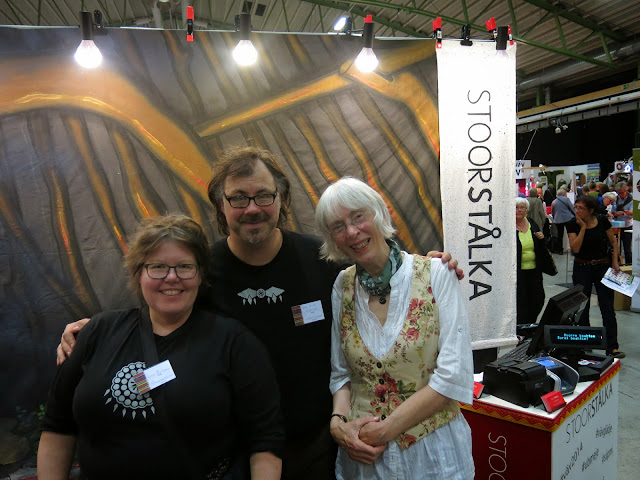There is also an on line discussion group at https://groups.io/g/braidsandbands Do join. It is a wonderful forum for finding out about different crafts to do with narrow wares.
It was founded in 1993 and has members around the world. The aim of the Society is to promote the education and practice of the art and craft of making constructed or embellished braids and narrow bands.

I have just received their latest annual journal Strands. I always look forward to it as there are so many different craft interests and so many interesting craft practitioners.
This edition is no exception.
Here is the contents page of the Journal. Interests range from plaits, lace, finger looped braids, reed and rush plaiting - so many techniques and, I sometimes feel, so little time to explore them all.
I am particularly interested in any article about the history of narrow wares and their production. This exploration by Peter Davenport is no exception.
All the articles have colour photograph illustrations which bring the techniques to life.
Membership of the Braid Society is easy. Just go to their web site at http://www.braidsociety.com/
Do think of joining. It is not expensive and you gain so much from the web site, newsletter and Journal and online discussion group.
The last Braids Conference was held in Manchester UK in 2012. There were many workshops to choose from and people came from all over the world. The previous Conference was in Japan and the next will be in Tacoma in the USA.
Online discussion group.
There is also a Yahoo group - Braids and Bands - which is a forum for discussing the practicalities of braiding. I have organised four online workshop for Braids and Bands over the years.I will be running another workshop early next year for Braids and Bands. As you know, one of my passions is band weaving. I have been exploring the band weaving heritage around the Baltic region.
As part of my trip, I attended the Weave Fair in Umea and met Per Niila and Lotta from Stoorstalka. They had been asked by a Sámi weaving tutor if a new design of heddle would make the traditional
Sámi bands, which use groups of floating pattern threads, easier to weave. They worked on this idea and put a new design out to test.
 |
| Traditional way of weaving Sámi bands with groups of pattern threads. |
In traditional Sámi weaving, the floating pattern threads go over the top of the heddle. In order to pull them down, string heddles have to be used.
The background threads weave plain weave.
As a result of this request by a Sámi weaving tutor, a new heddle is now on sale for weaving these type of bands. It is called the Sigga heddle. The background threads weave plain weave and are threaded alternately through a slot and hole. The pattern threads have their own shorter slots. It works in the same way as the Sunna heddle.
 |
| The Sigga heddle |

Early next year I will be organising another online workshop for Braids and Bands looking at how this heddle makes this type of weaving so much easier.
I have started to trial the heddle and it really does work well. I will be busy weaving different examples for use during the tutorial next year over the next few months. This band has one group of ten 'jumping' pattern threads
I was asked for the proper weaving term for the supplementary warp pattern threads but I think the term jumping pattern threads is so much more evocative. They do seem to jump up and down on the band.
I was asked for the proper weaving term for the supplementary warp pattern threads but I think the term jumping pattern threads is so much more evocative. They do seem to jump up and down on the band.
Here is an example that I wove for the previous tutorial. This band has two groups of jumping pattern threads. I love this Sámi design.
Happy weaving
Susan J Foulkes Oct 2014



























